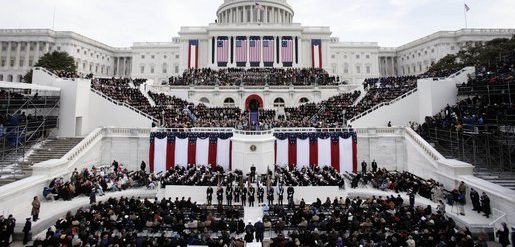No matter who is elected, in just over 250 days a new President will take office. Plans are already underway to ensure he or she hits the ground running. But smooth transitions are not easy. Traditionally a period of adjustment, the first months of a new administration are often difficult as the administration finds it challenging to effectively promote their policy agendas at the beginning of a term.
Dan Chenok, Executive Director of IBM Center for the Business of Government, sat down with Christopher Dorobek on DorobekINSIDER program to discuss ways to make the impending transition smoother and more efficient for the incoming administration. His perspectives stem from his contributions to IBM Center for Business and Government and Partnership for Public Service’s recent report, “Enhancing the Government’s Decision Making: Helping Leaders Make Smart and Timely Decisions,” which provides recommendations to the new administration’s transition team.
Chenok explained that new administrations are stuck in a catch-22 because their administration is most powerful in those first few months – yet at the same time, in those months, they’re the most inept. On the flip side, as their power wanes, their understanding of how to push their policy agenda starts to improve. He emphasized that, “the transition period is critical because it accelerates the ability of an administration to take advantage of the first year.”
In order to make the most of the first few months in office, Chenok insisted a new administration must establish a solid initial process to push policy. He explained that when an administration does not have to spend time making up for bad decisions made early on, they can carve a better and more effective path for the administration and country as a whole.
The IBM Center for the Business of Government and Partnership for Public Service’s report says there are four ways that the new administration should proceed in their first few months in power. The suggestions include:
- Establishing a decision framework
- Harnessing effective governmental decision processes
- Adapting decision support systems to better inform decision-making
- Developing ideas and tools to enable practical decision-making in the complex federal government
Chenok explained that the tools to make the beginning of an administration most effective apply to much more than just the budget for their policy agenda.
“It’s not just the budget,” he said. “There’s a regulatory cycle for particular regulations, and there’s an acquisition cycle that ties to agencies’ budget and spending plans, and ties to the fiscal year.” He emphasized the importance of having a comprehensive game plan to tackling policy agenda at the beginning.
“It’s important to think early about the process by which key priorities are advanced in terms of decisions that are made to implement them,” he added. In particular, it’s important “to think about who needs to be in the room, what information they need and once they make a decision, how does that decision get rolled out so that it’s implemented quickly.”
For more details on how the new administration can work to make the transition as smooth as possible check out the Partnership for Public Service and IBM Center for the Business of Government’s report “Enhancing the Government’s Decision Making: Helping Leaders Make Smart and Timely Decisions.”





Very interesting posted overview on the future smoother transition to be performed by the incoming US Administration starting on January 20, 2017. The suggested downloadable document “Enhancing the Government’s Decision Making: Helping Leaders Make Smart and Timely Decisions” by G. Edward DeSeve is very comprehensive and it is focused on ‘Improving Decision Making’, respectively on “Creating the capacity to enhance analytics decision-making through strategic foresight and integrating existing planning, program evaluation, risk management, analytics and benchmarking capabilities”. The mentioned report “presents insights and options for effective decision-making in government” and its content is structured over two main parts and four appendixes.
Part I is a summary of the Roundtable Discussion dealing with four principal issues. Each issue is detailed over three sections, respectively: Issue Background, Roundtable Discussion and final Insights and Options.
Issue 1: Establishing Decision Frameworks and Associated Governance Structures
Issue 2: Harnessing Different Governmental Decision Processes
Issue 3: Adapting Decision Support Functions to Better Inform Decision-Making
Issue 4: Enablers—Getting It Done in Government.
Part Two is dedicated to Making Smart, Timely decisions and includes three recommendations and one main focus area of the roundtable discussion, respectively:
Recommendation 1: Early On, Define and Explain How Decisions Will Be Made
Recommendation 2: Use an Enterprise Approach when Creating Decision Frameworks
Recommendation 3: Enhance Analytic Decision-Making by Integrating a Range of Perspectives
Getting It Done: Timing and Who Does It
The first two appendixes include the roundtable attendees and respectively the project contributors. The last two appendixes contain Suggested Approach for Implementing Recommendations and respectively Sample Frameworks for Different Federal Decision Processes.
The report content is outstanding and very useful for all type government managers. It should be read especially by all those future government leaders implied in paying early attentions to smart, timely decision-making processes, necessary at different governance structures and levels.